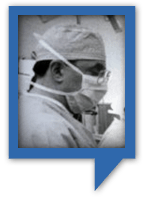The emergence of the electronic medical record (EMR) has spawned a new occupation—the scribe.
A scribe is someone who accompanies a physician and documents the interchange between the doctor and patient. This enables the doctor to focus on the patient instead of wasting time navigating through the EMR, which has become a tool for hospital finance departments instead of a way for doctors to communicate.
Scribes need not have medical backgrounds and may be drawn from the ranks of high school graduates, college students, and medical students. Salaries range from $8 to $16 per hour.
Emergency departments currently are most likely to employ scribes, but they have also been hired in clinic or office settings.
Is there any proof that scribes really improve productivity or satisfaction of either doctors or patients?
A PubMed search using the term “scribe” yielded only 25 papers, most of which were low quality studies from emergency departments suggesting that scribe use indeed did improve productivity and physician satisfaction without impacting patient satisfaction negatively.
However one paper, published in Academic Emergency Medicine, concluded the following:
This retrospective data analysis suggests that at our institution, ED scribes are associated with an increase of 2.4 billed relative value units per hour, which is primarily gained from the additional 0.8 patients per hour who are seen, but not with changes in turnaround time to discharge.
Some residency programs are considering using scribes to ease the burden of charting done by residents, but to date, no studies on the use of scribes on inpatient or resident teaching services have been published.
Here are some concerns with the use of scribes on a resident services:
I have no personal experience with scribes, but I suspect their notes would tend to be too long rather than too short. Do we really need longer notes in charts? No. Residents need to learn how to write concise progress notes that do not duplicate what is already in the chart. This would require a culture shift by faculty and senior residents who tend to expect voluminous notes.
The presence of a third party during the doctor-patient interaction has not been an issue so far, but it is conceivable that some patients might feel uncomfortable.
Studies have shown that an individual’s retention of information decreases when it is entered into a computer rather than handwritten. With shortened work hours and frequent handoffs, will residents remember anything about their patients’ problems when charting is done by scribes?
When a scribe enters a note in an EMR, it must be cosigned by the physician. Experience with dictated H&Ps, notes, and operative reports shows that most of these entries are not carefully proofread before they are signed. Using scribes opens up new vistas for plaintiffs’ attorneys if patients experience bad outcomes.
True story. I know someone who had pain in her arms. The scribe documented the doctor as saying “consider a mass” instead of what he actually said, “consider MS.”
Until an EMR truly focused on patients and physicians instead of maximizing billing opportunities is created [which will never happen], scribes will proliferate.
What do you think about scribes?
Skeptical Scalpel is a retired surgeon and was a surgical department chairman and residency program director for many years. He is board-certified in general surgery and critical care and has re-certified in both several times. He blogs at SkepticalScalpel.blogspot.com and tweets as @SkepticScalpel. His blog averages over 1400 page views per day, and he has over 10,100 followers on Twitter.


 SkepticalScalpel
SkepticalScalpel